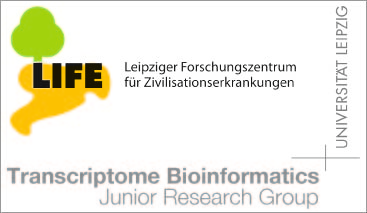Publications - Published papers
Please find below publications of our group. Currently, we list 565 papers. Some of the publications are in collaboration with the group of Sonja Prohaska and are also listed in the publication list for her individual group. Access to published papers ( ) is restricted to our local network and chosen collaborators.
If you have problems accessing electronic information, please let us know:
) is restricted to our local network and chosen collaborators.
If you have problems accessing electronic information, please let us know:
 ) is restricted to our local network and chosen collaborators.
If you have problems accessing electronic information, please let us know:
) is restricted to our local network and chosen collaborators.
If you have problems accessing electronic information, please let us know:©NOTICE: All papers are copyrighted by the authors; If you would like to use all or a portion of any paper, please contact the author.
Indication of ongoing amphipod speciation in Lake Baikal by genetic structures within endemic species
Gurkov, Anton and Rivarola-Duarte, Lorena and Bedulina, Daria and Fernández Casas, Irene and Michael, Hendrik and Drozdova, Polina and Nazarova, Anna and Govorukhina, Ekaterina and Timofeyev, Maxim and Stadler, Peter F and Luckenbach, Till
Download
Status: Published
BMC Evol. Biol. 19: 138
Abstract
Background
The ancient Lake Baikal is characterized by an outstanding diversity of endemic faunas with more than 350 amphipod species and subspecies. We determined the genetic diversity within the endemic littoral amphipod species Eulimnogammarus verrucosus, E. cyaneus and E. vittatus and investigated whether within those species genetically separate populations occur across Lake Baikal. Gammarus lacustris from water bodies in the Baikal area was examined for comparison.
Results
Genetic diversities within a species were determined based on fragments of cytochrome c oxidase I (COI) and for E. verrucosus additionally of 18S rDNA. Highly location-specific haplogroups of E. verrucosus and E. vittatus were found at the southern and western shores of Baikal that are separated by the Angara River outflow; E. verrucosus from the eastern shore formed a further, clearly distinct haplotype cluster possibly confined by the Selenga River and Angarskiy Sor deltas. The genetic diversities within these haplogroups were lower than between the different haplogroups. Intraspecific genetic diversities within E. verrucosus and E. vittatus with 13 and 10%, respectively, were similar to interspecies differences indicating the occurrence of cryptic, morphologically highly similar species; for E. verrucosus this was confirmed with 18S rDNA. The haplotypes of E. cyaneus and G. lacustris specimens were with intraspecific genetic distances of 3 and 2%, respectively, more homogeneous indicating no or only recent disruption of gene flow of E. cyaneus across Baikal and recent colonization of water bodies around Baikal by G. lacustris.
Conclusions
Our finding of separation of subgroups of Baikal endemic amphipods to different degrees points to a species-specific ability of dispersal across areas with adverse conditions and to potential geographical dispersal barriers in Lake Baikal.















